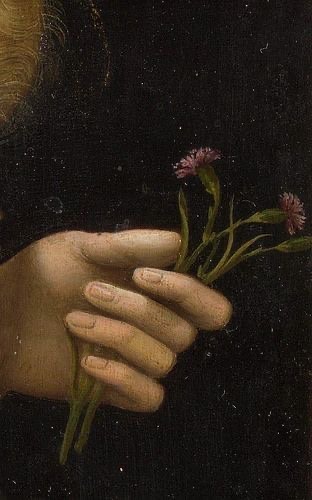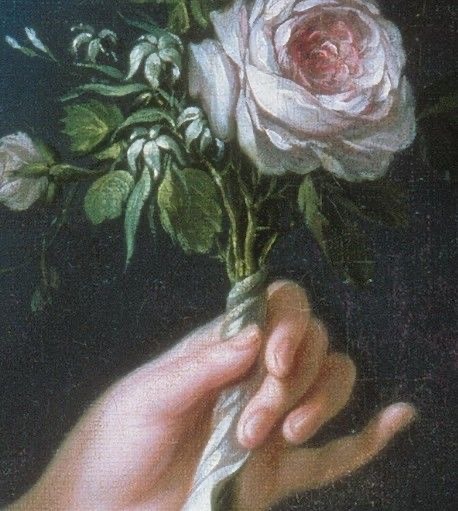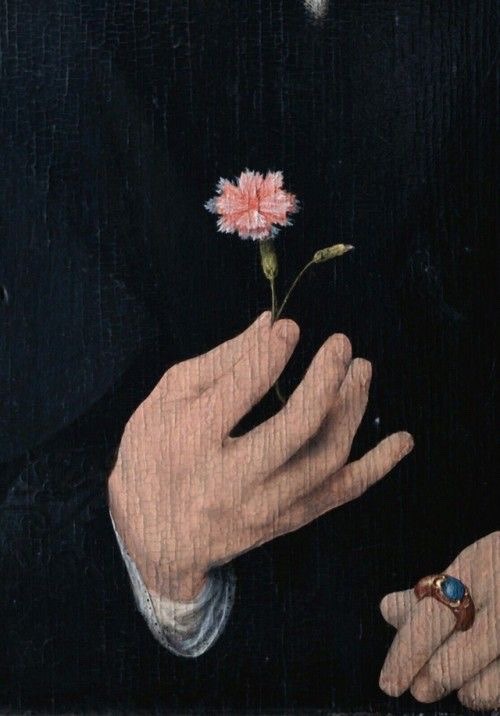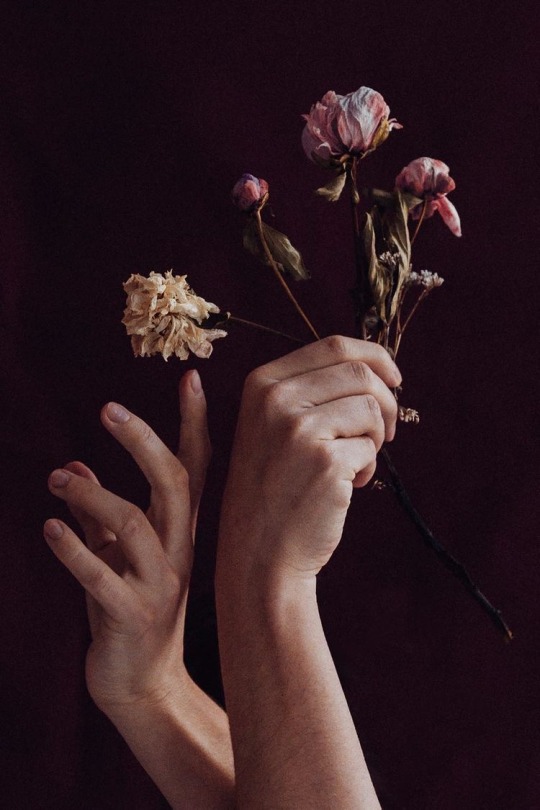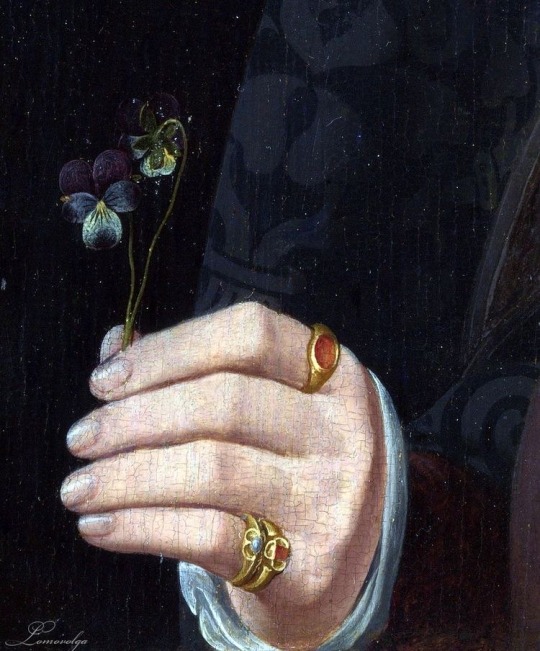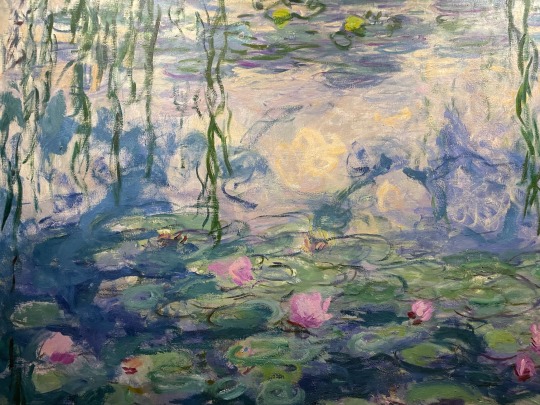Text
Review Ramble: The Fault in Our Stars
I keep thinking back to when “The Fault in Our Stars” was at its peak in popularity, and you had dual cultures where some people adored it, and others made memes out of it. And while there's definitely a lot of conversations to be had about the genuine criticisms of the novel and John Green, a major fraction of the criticism it got was just a classic case of people dunking on anything that teen girls like. It’s a romance novel about two cancer afflicted teenagers falling in love and their journey through their last days. I have yet to see a discussion on how the story impacted chronically ill communities. Especially the youth. Everyone really took heart to the cliché teen romance rather than (what I think) was a significant subject of the story.

Why should you read it?
The story talks from the perspective of a patient with terminal cancer who talked about what it was like to be depressed at the hands of being constantly sick, how love and friendship is intertwined and how it feels for it to be limited, how every regular human chore or activity is something so different, and what that means for the people around her. Shows you how it feels to have numbered days and that sometimes your bucket list will stay unfulfilled- not because you have a given time, but because you find greater joy in the first few checkdowns on it. All of that just because you’ve been granted a smaller infinity than others. Makes you cherish every moment because you are supposedly I’m hoping, someone with a bigger infinity. On the contrary, just because the lead characters are cancer patients, doesn’t mean it’s not as relatable to others. The story moves in such a realistic manner that anyone can relate to it, understand and feel it. Friendship, love, anger and regret- we’ve all felt these feelings. There’s inclusivity for all. And honestly I don't think that this story and narrative should be taken for granted and be marked as overrated or basic romance considering how little these kinds of stories get told, especially from the perspective of a young person.
This book holds a special place in my heart:
I bought mine sometime in 2016. Throughout my teen years till now, as the book grew older with me in my shelf and the more I reread it- the more I feel a circulation of grief, gratefulness and love. The dialogues exchanged among the characters touch your heart and make you think, make you relate. It’s so special to me because it’s my first book- the book that now has got me saying “I love to read books”. For me, it was spectacular. I could ramble about it for hours. If I had my way, I'd stop right here and tell you to go buy it instantly. Give it a read and fall in love with Hazel and Augustus.
Should you read other John Green books? Yes, definitely.
John Green is a stunning writer. His books are fairly easy to read for beginners with youth as a strong target audience and have a way of making you keep reading them. The combination of teenage humor, the crafting of epic awkward situations, and the emotions that are perfectly captured. It is the perfect recipe to make you read it one go, making you cry and laugh at the same time.
Some more John Green recommendations: “Looking for Alaska”, “Paper Towns”, “Will Grayson Will Grayson”, “An Abundance of Katherines”, and “Turtles All the Way Down”.
⭐
Two of my favorite quotes from the novel:
"Grief doesn't change you Hazel, it reveals you"
"That's the thing about pain, it demands to be felt."
#the fault in our stars#john green#novel review#novel recommendation#teen fiction#fiction#augustus waters#hazel grace lancaster#cancer#friendship#relationship#young adult#feel good#bookstagram#best seller books#book quotes#bookworm#book review
11 notes
·
View notes
Text
Not gonna lie, it did feel a bit eerie and unsettling when my mind went straight to John Green saying “Maybe we invented metaphor as a response to pain" after reading Kafka on the Shore where Haruki Murakami said “Everything’s a metaphor”
1 note
·
View note
Photo

Jean-Baptiste Morel - Still life of flowers with roses, narcissuses and carnations -
oil on canvas, height: 80.8 cm (31.8 in); width: 30.1 cm (11.8 in)
Jan Baptist Morel or Jean Baptiste Morel (1662 – 1732) was a Flemish still life painter who specialized in flower pieces and garlands. He was a successful artist who worked in Antwerp and Brussels.
476 notes
·
View notes
Photo
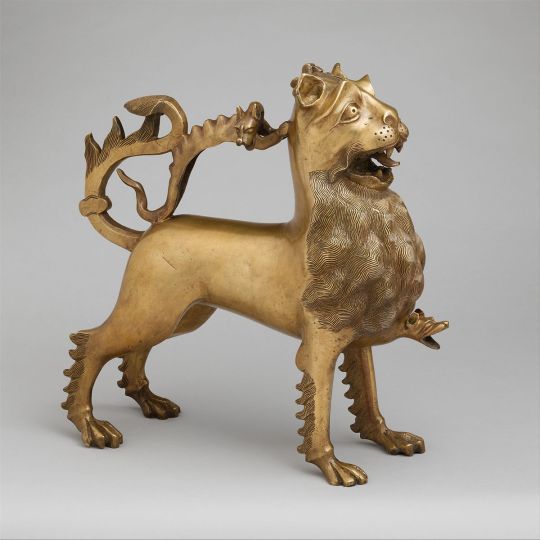
An aquamanile in the form of a lion, Germany, ca. 1400. What’s an aquamanile, you ask? It’s a jug-like thing, often in the shape of an animal or human, used for pouring water over your hands to wash them. These were used at fancy medieval meals and by priests at mass.
{WHF} {Ko-Fi} {Medium}
96 notes
·
View notes
Text
A brief reset
June, July and August- these three months have been frantic. Issues, misunderstandings, confusions, mixed emotions, losses, and academic underperformance pulled me down, and my fracture was like another hit. The impact was simply vile. These bad months helped shape my priorities and decisions and made me realise that- your choices matter the most when it comes to the consequences you’ll face. I’m happy with how things are turning out currently followed since September, contented that I’ve found and been blessed with a trustworthy bunch of amazing friends and everything overall. Under a bit of surprising circumstances, made this friend who is too close to my heart, he’s a gem. It’s time to get back to the academic excellency I used to have and do better in progress. If you’ve been through something like this as well, just pick yourself up, you got this. Y’all got this. Let’s start this brief reset with a delicious, simple breakfast.
With love,
Prithee.

P.S. This post is from September 13, 2022.
1 note
·
View note
Text
A major Dan Brown appreciation
Dan Brown.
And, his Robert Langdon series.
I remember reading “Digital Fortress" at the lobby of Hotel Ramada from the common bookshelf, barely completing the book in three days while my stay with my family in Shanghai, China. Read the rest of it via a pdf I found online because it just sticks to you. Brown would go with his recipe of conspiring the heck out of the literary world with his work. It's not the first Langdon series book, but it really caught my attention and I wanted to explore more of the series.
Each a separate plot, an individual storyline of its own. I came home and bought "Origin" read it and then purchased "Da Vinci Code" (the actual best), and so on. Still deficit of "Angels and Demons"- which I'll hopefully buy next, and get a hardcopy of "Digital Fortress" and my collection would be complete. The art mentions are major in his works, mentioning real landmarks, real organisations and controversial truths, in the form of a blockbuster mystery high speed pursuit style of the novels. His fascination with the paradoxical interplay between science and religion really makes you think. Raises a lot of questions you didn't bother thinking about before. His play with words show how literature is conceptualized, created and which mixture of elements makes works and genres unique. All in all, a 10/10 Author for me.

#dan brown#the lost symbol#inferno#deception#point#davincicode#origin#best seller books#bookworm#long reads#aesthetic#history
24 notes
·
View notes
Text
Sistine Chapel Ceiling: A neophyte summary
The Sistine Chapel is the large papal chapel built within the Vatican between 1477 and 1480 by Pope Sixtus IV. The Sistine Chapel ceiling, painted in fresco (method of painting water-based pigments on freshly applied plaster, usually on wall surfaces. The colours, which are made by grinding dry-powder pigments in pure water, dry and set with the plaster to become a permanent part of the wall) by Michelangelo between 1508 and 1512, is a cornerstone work of High Renaissance art.

The narrative starts at the altar and then is divided into three sections. In the first three paint works, Michelangelo tells the story of The Creation of the Heavens and Earth, followed by The Creation of Adam and Eve and then, the Expulsion from the Garden of Eden; finally the story of Noah and the Great Flood is displayed.
Ignudi, or nude youths, sit in fictive architecture around these individual pieces of paintings, and they are accompanied by prophets and sibyls (ancient seers who, according to tradition, foretold the coming of Christ) in the spandrels. In the four corners of the room, in the pendentives, the scenes depicting the Salvation of Israel is shown.
After the story of the heavens up to the expulsion to Earth, the story of Noah and the Great Flood can be seen. The most remarkable piece in this section is The Deluge. In this fresco, Michelangelo has used the physical space of the water and the sky to separate four distinct parts of the narrative. On the right side of the painting, a cluster of people seeks sanctuary from the rain under a makeshift shelter. On the left, even more people climb up the side of a mountain to escape the rising water. Centrally, a small boat is about to capsize because of the unending downpour. And in the background, a team of men work on building the arc—the only hope of salvation. Up close, this painting confronts the viewer with the desperation of those about to perish in the flood and makes one question God’s justice in wiping out the entire population of the earth, save Noah and his family, because of the sins of the wicked. Unfortunately, from the floor of the chapel, the use of small, tightly grouped figures undermines the emotional content and makes the story harder to follow.
Michelangelo completed the Sistine Chapel in 1512. Its importance in the history of art cannot be overstated. It turned into a veritable academy for young painters, a position that was cemented when Michelangelo returned to the chapel twenty years later to execute the Last Judgement fresco on the altar wall.
#michelangelo#sistine chapel#creation of adam#the deluge#salvation#chapel#art#sculpture#fresco#art history#last judgement#emotions#background#noahsark#garden of eden#vatican#renaissance#painting#colors#angels#heavenly#earthcapture
5 notes
·
View notes
Text
Leonardo da Vinci: The Renaissance Man
(April 15, 1452 in Florence, Italy - May 2, 1519 in Château du Clos Lucé, Amboise, France)
Leonardo di ser Piero da Vinci, in short- Leonardo da Vinci, was an Italian polymath of the High Renaissance. He is best known as the famous artist who painted the ‘Mona Lisa’, which has hung in the Louvre gallery in Paris for over 200 years. However he wasn’t just a great painter. Da Vinci was also a sculptor, an architect, a poet, a composer, a scientist, a mathematician, an engineer and an inventor. He was a genius and perhaps one of the most remarkable men that has ever lived.

A brief convenient timeline:

5 interesting facts:
➻ His surname Da Vinci simply means ‘of Vinci’, a Tuscan village not far from Florence, which is where his father’s family took their name.
➻ He was a huge animal lover. He even chose to be a vegetarian, something that was very unusual in those days. He was said to buy animals from the market just so he could set them free from their cages.
➻ He was left handed. But as well as using his left hand to write, he wrote back to front, from right to left across the page which meant that, for many years, people were unable to understand his notes. This ‘mirror writing’ led people to believe that Da Vinci wanted to keep his ideas secret and to himself. Moreover, he could use both his right hand and left hand equally well, and at the same time.
➻ He was undoubtedly ahead of his time, with incredibly forward-thinking ideas and discoveries. Da Vinci was the brains behind the bicycle, the aero plane, the helicopter and the parachute – amazingly he drew designs for all these machines about 500 years before its time. He was the first person who explained why the sky is blue.
➻ Leonardo is commonly known as the ‘Renaissance man’. Renaissance is actually a French word meaning ‘rebirth’ and it describes the time in history which began in Italy in the 14th century. The Renaissance lasted till the 17th Century. The Renaissance was a time for new thinking and a theme of the era was the belief that man was the center of his own universe. People were encouraged to experiment, observe, and question any and all things. But by the term ‘Renaissance man’, what is actually depicted is that- a well-rounded individual, gifted and skilled in many different areas; a polymath. The terminology is after Leonardo da Vinci, the quintessential example of a it and then have been honorably assigned to later great individuals.
Some of his notable works:
“Mona Lisa”- 1503, “The Last Supper”- 1498, “Vitruvian Man”- 1490, “Virgin of the Rocks”- 1483–1486, “Salvator Mundi”- 1500, and “La Scapigliata”- 1508 (unfinished).

#da vinci#mona lisa#vitruvian man#the last supper#artistic#paint#polymath#renaissance#art#traditional art#history#leonardo#leonardo da vinci#france
4 notes
·
View notes
Text
Let's define art
You might have seen some worldwide celebrated artworks like “Mona Lisa”, “The Starry Night”, “The scream” and thought- you’re not intellectual enough to understand the art and relate to the core message of the work, let’s leave it for the great minds and the deep thinkers to unravel it. But no. Art is for anyone who wants to experience it. Songs you like, movies you watch, choreographies you’ve seen, crafts people make, a poem you tried to write, even a quilt that your grandma made- all of that and more is art. Art has been around for thousands of years and has evolved throughout the time based on geography, climate, resource availability and even individual choice. The biggest artists all around the globe did put their colors to magic under certain situations, trying to tell certain stories- but experiencing art is a totally different subject.
Understanding art is not equivalent to experiencing and feeling the emotions from it. Art is for anyone who wants to experience it. Art is anything that stirs emotion in you and it depends on your story, your shaping of life and who you are- when it comes to your take on the piece. If you take a group of people and show them an artwork, they’ll all have their individual diverse reactions to it. Different perceptions, different observations. Some might find it beautiful and some might just not. After all, everyone is entitled to their own preferences. If you don’t happen to like a sculpture that maybe your friend likes, it doesn’t devalue you or the sculpture. A part of the sculpture’s value comes from the reasoning why your friend admires it so much and you can always learn something new from it, have a fresh point of view.
Everyone reacts to art differently and has the potential to grow and learn from it. Art is a diverse range of human activity which opens a portal of personal experience for you to draw meaning from, according to your own insight and impression of it. The term art is really just a label.
Art is everywhere.
Art is existence.
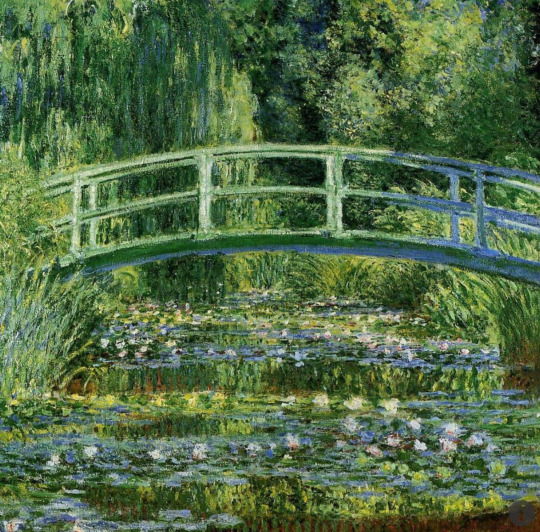
#art#artistic#label#experience#da vinci#michaelangelo#picasso#paul gaugin#zainul#abedin#johannes vermeer#katsushika hokusai#painting#colors#sculpture#salvador dali#van gogh#vincent van gogh#raphael
53 notes
·
View notes
Text
Ever experienced book hyperactivity? Where like, you read a book and you're almost done with it, but you stop and start a different book, and then you stop that one partway through and start a different book. And repeat and repeat, until you've got like eight books that you're technically "reading" but a few of them you haven't even picked up in months. And it's not that you didn't like them and don't want to read them anymore, you want to be reading everything at once. And if you picked up just one of them, you could finish it in less than an hour, but are you gonna do that? No, you're gonna start re reading one of your favourites instead and then never finish that. And then you feel like a fraud of a book lover because you can finish a book with half a week, you know you can, but now you have books that you've been "working on" for months and you get so guilty when someone sees you with the same book like two weeks in a row, and you KNOW you're better than that. Sucks.

#bookworm#booklr#book blog#bookaholic#hyperactive#reading#books#book quotes#booklover#bookstagram#books and reading#stress#burnout#finished#completion
1 note
·
View note
Text
Some of Van Gogh’s many beautiful artworks

Vase with Pink Roses ✎ 1890
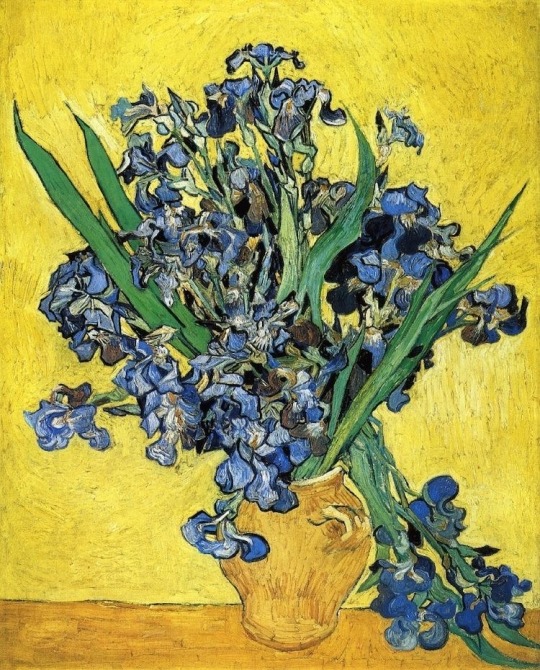
Vase with Irises against a yellow background ✎1889

Wheatfield with crows ✎ 1890

Van Gogh’s Chair ✎ 1888

Café Terrace at Night ✎ 1888
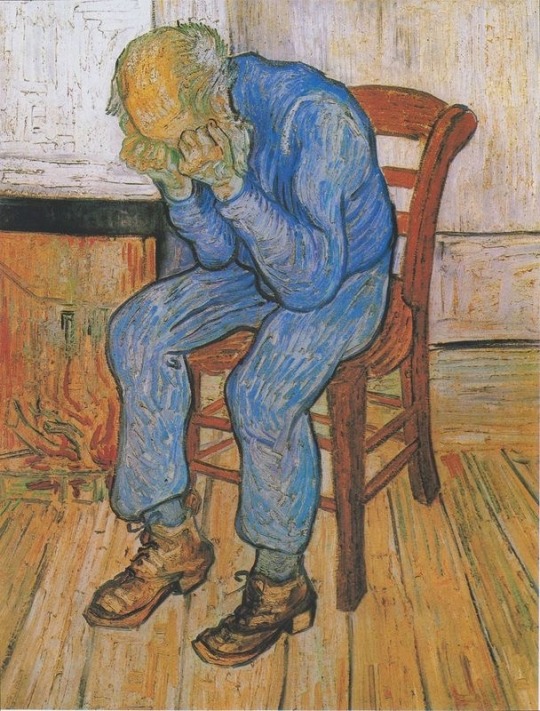
At Eternity’s Gate ✎ 1890
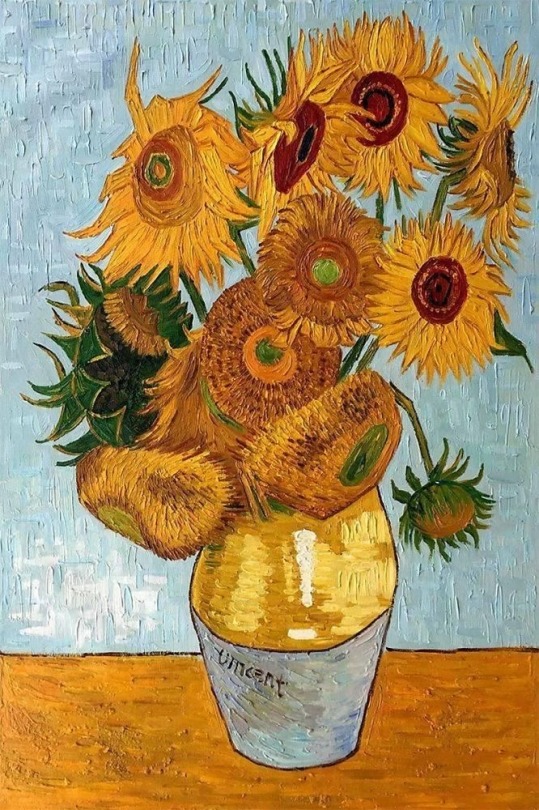
Vase with twelve sunflowers ✎ 1888

Garden at Arles ✎ 1888
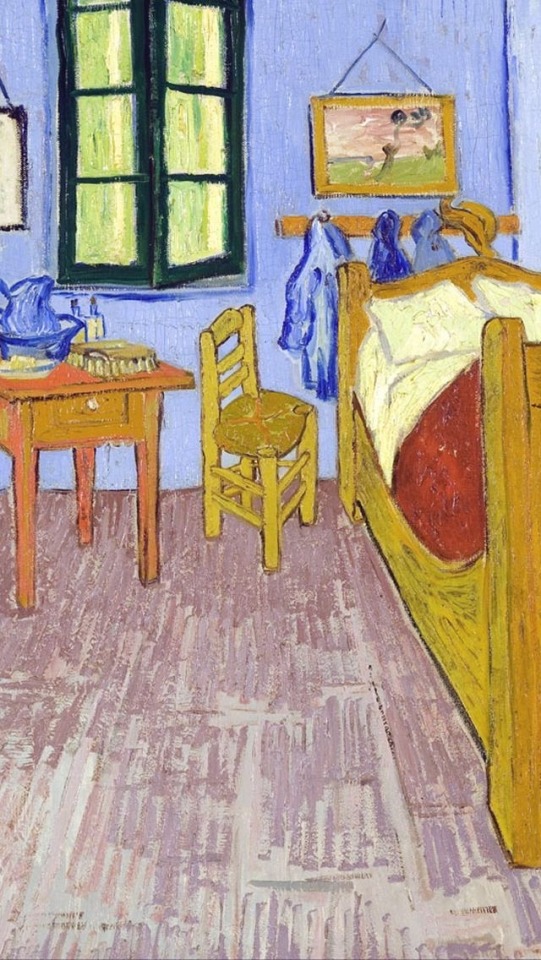
The Bedroom ✎ 1889

Tree Roots ✎ 1890

Head of a skeleton with a burning cigarette ✎ 1885-1886
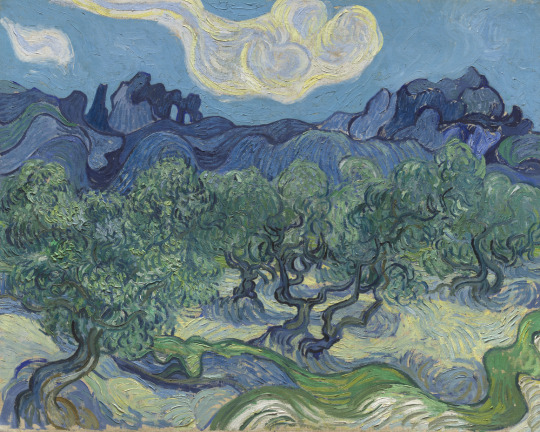
Olive Trees ✎ 1889

Almond Blossoms ✎ 1890
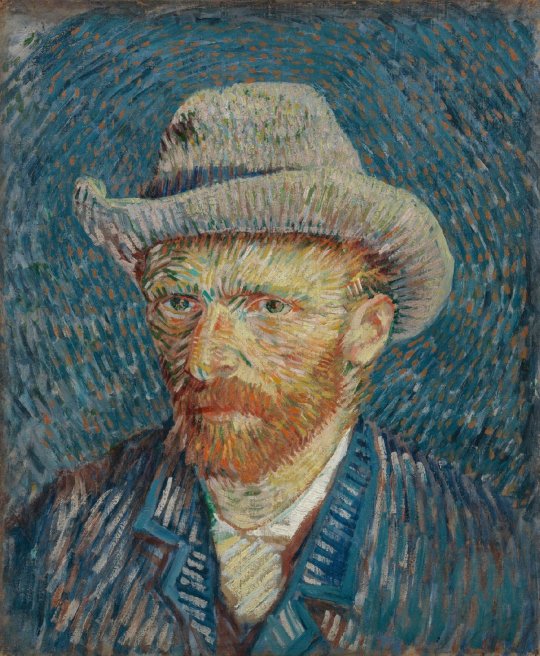
Self Portrait with grey felt hat ✎ 1887
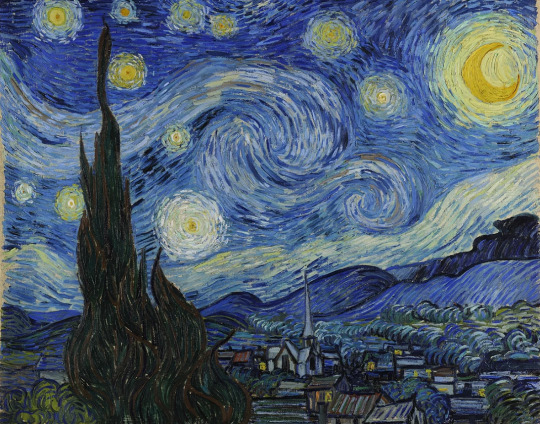
The Starry Night ✎ 1889
•
The pictures are collected from Pinterest.
1 note
·
View note
Text
Get to know the Starry Night Artist
Van Gogh.
Vincent Van Gogh.
If you have a brief knowledge on art, you might have at least come across “Starry Night”. And. if you’ve come across this beautiful piece of art, you’ve definitely heard of him. Here’s a little description of him, for you to know the artist on a slightly personal level, empathise and realise.
A Dutch artist, one of the greatest- my absolute favourite.
•
A brief life story
Born on 30th March 1853, in Zundert in the southern Netherlands, the son of a pastor. In 1869, he took his first job, working in the Hague branch of an international art dealing firm. He began to write to his younger brother Theo, a correspondence which continued for the rest of Van Gogh's life.
His job took him to London and Paris, but he was disinterested in the work and was dismissed in 1876. He briefly became a teacher in England, and then, deeply interested in Christianity, a preacher in a mining community in southern Belgium.
In 1880, at the age of 27, he decided to become an artist. He moved around, teaching himself to draw and paint. His financial support used to come from Theo. In 1886, Van Gogh joined Theo in Paris, and met many artists including Degas, Toulouse-Lautrec, Pissarro and Gauguin, with whom he became friends. His style changed significantly under the influence of Impressionism, becoming brighter. He painted a large number of self-portraits in this period.
Looking into him as person- he had a major drinking problem. He drank alcohol to excess; more specifically he drank the potent liquor absinthe, also known as “the green fairy,” which was believed to cause delirium and hallucinations. This caused him to be aggresive, experience seizures and unstable mental episodes. Doctors diagnosed it as a possible Temporal lobe epilepsy- a chronic disorder which processes seizure may be related to having odd feelings, such as euphoria, deja vu or fear. In 1888, Van Gogh moved to Provence in southern France, where he painted his famous series 'Sunflowers'.

He had invited Gauguin at Arles, France and both the men had a very unpleasant two-days stay together because of Van Gogh’s unstability. They has broke into a huge quarrel which led to Van Gogh threatening his friend with a razor. Deeply remorseful, he cut his own ear afterwards as an account of self-repentance. [There’s a debate about this though- some scholars say Gauguin had cut his ear off as a self-defense action while they had broken into the quarrel. But the former self-harm version of the story is widely believed rather than the latter debatable one]
In May 1889, Van Gogh, who’d experienced episodes of poor mental health in the previous months, checked himself into Saint Paul de Mausole, a mental hospital located in a former monastery in the town of Saint-Remy-de-Provence in southern France. Although at the time the painter was diagnosed with epilepsy, researchers have since suggested a host of alternative diagnoses, including bipolar disorder, alcoholism and acute intermittent porphyria, a metabolic disorder. His stay at the hospital was for a year, during which time he painted scenes of its gardens as well as the surrounding countryside. The more than 100 paintings he produced during this period include some of his most celebrated works, such as “The Starry Night,” which was acquired by New York City’s Museum of Modern Art in 1941, and “Irises,” which was purchased by an Australian industrialist in 1987.
He was unlucky in love as well. In the early 1880s, when he was starting out as an artist and living with his parents in the Netherlands, he fell in love with his widowed cousin, Kee Vos-Stricker. Although she rejected him, he didn’t give up easily, which led to tensions with his parents, who also weren’t thrilled with his new choice of career. Next, he became involved with a woman named Sien Hoornik, a former prostitute who served as his model and also had young children. Van Gogh’s family disapproved of Hoornik and the relationship eventually ended. Later, while still residing in the Netherlands, he had a relationship with an older neighbor, Margot Begemann, who attempted to kill herself because her family opposed the match. In Paris, Van Gogh got involved with an artist’s model and café owner named Agostina Segatori, of who he made a painting too, but that romance fell apart as well. Hence, neither he ever got married, nor did he have children.
On 27 July 1890, tired of his life, Van Gogh shot himself in the chest [some scholars debate the shot was in the abdomen] with a revolver- leading to his death two days after with his brother Theo at his bedside.
•
His art
Vincent van Gogh created a vivid personal style, noted for its striking colour, emphatic brushwork and stroke-based painting. He is well known for his brushstokes of thickly laid-on paint. This technique is called Impasto. An artist lays a thick layer of paint on canvas, brushstrokes get more noticeable, adding a special texture to the painting. He had three distinct art styles: Post-Impressionism, Neo-Impressionism and Pointillism.
▶ Post-Impressionism
A predominantly French art movement that developed roughly between 1886 and 1905, which was from the last Impressionist exhibition up to the birth of Fauvism [a style of painting with vivid expressionistic and non-naturalistic use of colour that flourished in Paris from 1905]. The movement emerged as a reaction against impressionism and its concern for the naturalistic depiction of light and color. Impressionism is an artistic style that seeks to capture a feeling or experience rather than to achieve accurate depiction. Post-Impressionists both extended Impressionism while rejecting its limitations: the artists continued using vivid colors, a thick application of paint and real-life subject matter to depict the situation in a more realistic manner, but were more inclined to emphasize geometric forms, distort forms for an expressive effect and use unnatural and seemingly random colors. Thinking out of the box and, playing with imagination. Due to this broad emphasis on more abstract qualities and symbolic meaning, Post-Impressionism can encompass sub-movements such as Neo-Impressionism, Symbolism and Synthesism.
▶ Neo-Impressionism
An art style to create more luminous paintings that depicted modern life. It has science faith background which entails painting in a calculative way to direct the artwork’s time of the day, luminosity direction, etc. to provide a clearer idea of the art adaptation. Neo-Impressionists applied scientific optical principles of light and colour to create strictly accurate compositions to make the artwork as close as possible to the real life depiction.
▶ Pointillism
The theory or practice in art [generally practiced by neo-impressionists] of applying small strokes or dots of color to a surface so that from a distance, they seem blended together.
Though his career as an artist had not flourish as brightly- On March 17, 1901, 71 of van Gogh's paintings were displayed at a show in Paris, and his fame grew enormously. His mother lived long enough to see her son hailed as an artistic genius. Today, Vincent van Gogh is considered one of the greatest artists in human history. He produced more than 2,000 artworks, consisting of around 900 paintings and 1,100 drawings and sketches.
Some of his famous artworks include- his self portraits, “Starry Night”- 1889, “Irises”- 1889, “Almond Blossoms”- 1890, “Vase with Fifteen Sunflowers”-1888, “Café Terrace at Night”-1888, etc.
•
For the ending of this post, here’s my favourite quote by Van Gogh:
“It is good to love many things, for therein lies the true strength, and whosoever loves much performs much, and can accomplish much, and what is done in love is well done.”
2 notes
·
View notes
Text
Burnout
Take breaks, do not give away all your energy. Every time you overwork, even when you think you aren't and you can afford that weight, every time you second guess yourself, you're in for a burnout. And you know, after burnout, overthinking and anxiety can take over with the craziest thoughts and beliefs- you don't have a lot of energy left to talk with it. So don't let this get to you, don't let it even start by taking care of yourself and putting yourself and your energy first. A job can take longer than you thought, and you cannot imagine beforehand how you're gonna feel in the future. Organize yourself in advance and make others aware of your boundaries.
The reason why you should avoid burnout is that one day, you might not come back from it easily. You might find yourself anxious, depressed, irritated. You feel restless, exhausted, you can't remember the last time you felt comfortable and relaxed. Your body will be constantly fatigued, your immunity system goes down and you will start falling sick more often.
Don't wait until things go bad to start taking care of yourself.
Take breaks and take care of yourself from the start.
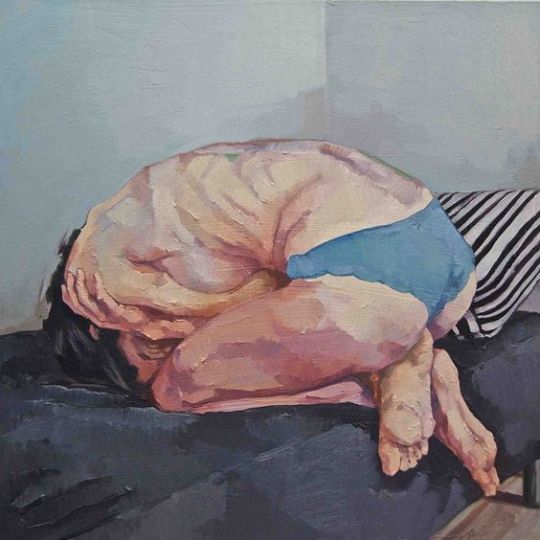
0 notes
Text
Some breathtaking sculptures throughout the time
Venus of Willendorf (25,000 BP)
It has been suggested that she is a fertility figure, a good-luck totem, a mother goddess symbol, or an aphrodisiac made by men for the appreciation of women. It is an 11.1-centimetre-tall (4.4 in) Venus figurine estimated to have been made around 25,000-30,000 years ago.

Nefertiti Bust (1345 BCE)
The Nefertiti Bust is a painted stucco-coated limestone bust of Nefertiti, the Great Royal Wife of Egyptian pharaoh Akhenaten. It symbolizes both the power of the sun and the strength of royalty in ancient Egyptian culture.

The Terracota Army (210–209 BCE)
The discovery of the Terracotta Army is important because of the information it gives historians about daily life in the Chinese Qin dynasty. The figures show armour and weapons, and the tomb contains many real artefacts such as chariots, weapons, pottery, and the human remains of workers who built it. It is a form of funerary art buried with the emperor.

Laocoön and His Sons (323 BCE – 31 CE)
In true Hellenistic fashion, Laocoön and His Sons showcases an interest in the realistic depiction of movement. In the action-packed scene, three figures frantically try to free themselves from the grasp of sinuous serpents.
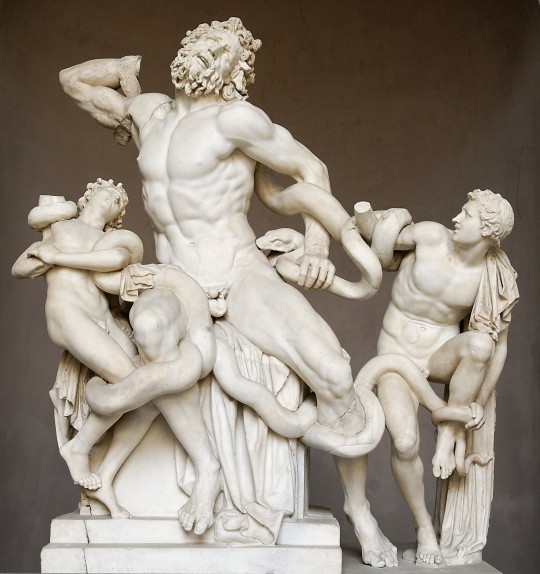
David of Michelangelo (1501– c. June 8, 1504)
During the High Renaissance, Michelangelo created figurative works that focused on balance, harmony, and the ideal form. David showcases these artistic sensibilities through his lifelike, asymmetrical posture—known as contrapposto or “counterpose”—and his realistic and highly detailed anatomy.

The Ecstasy of St. Teresa (1647–1652)
It depicts a scene from the saint's spiritual autobiography. Teresa recalls an angel wielding a fire-tipped spear who repeatedly pierces her heart, causing her to experience spiritual bliss.

Perseus with the Head of Medusa (1800 and 1801)
Perseus has decapitated Medusa because the gaze of Medusa turned all who looked at her to stone. Perseus guided himself by her reflection in a shield given him by Athena and beheaded Medusa as she slept. He then returned to Seriphus and rescued his mother by turning Polydectes and his supporters to stone at the sight of Medusa's head. The said sculpture is a depiction of that.

All the pictures are collected from Pinterest and briefings have been extracted from various articles through google.
#sculpture#michelangelo#david#artistic#art#medusa#mythology#perseus#teresa#renaissance#terracota#soldiers#china#venus#nefertiti#ancient egypt
12 notes
·
View notes
Text
Graffiti is not vandalism, but a very beautiful crime
Where do you expect to see grafitti? Of course not in a museum. But it is an art form right? Why is it not in a museum?
Graffiti is found in many societies with different cultural contexts and has become a witness and an ethnographic source of information on urban art development (Waclawek, 2011). Modes of expression are mainly related to visibility, notoriety, choice of venue, transgression, and are often a mean to react and protest while remaining anonymous, by illegally introducing messages in the public space. Contemporary graffiti is also described by its controversial issues between social, style and aesthetic forms along with vandalism aspects. Facing a worldwide plethoric production, the assumption that Graffiti is a positive urban art form raises some paradoxical questions regarding “visual pollution”.
However, it is often seen as illicit production and vandalism asset. For instance, removing graffiti or restricting the practice of graffiti from the public space has been a controversial issue for artists and authorities. A question therefore arises: how can the aesthetic and pictorial aspects of these acts of creation be considered as acts of vandalism? (Bengsten, 2016)
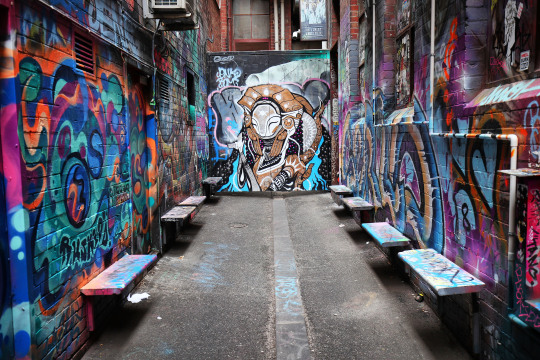
The growing interest leads to different perceptions probably with greater attention to the act of "heritage" at the expense of the act of protest. The patrimonialization of graffiti and, to a large extent, of Street Art is an essential point, because graffiti writers or street art practitioners often see institutions as "looters" who, come to preserve cultural acts that other public institutions have condemned (Omodeo, 2016). Heritage is primarily a process which, in principle, prevents any destruction or voluntary surrender of an artwork, which are a corollary of creation and its limitation of copyright in time. For most “writers”, Graffiti is not an act thought out on the basis of a future conservation. The issue is visibility and notoriety, by the number, size and/or the choice of venue. Regarding paint materials, so many spray paint brands are available to the general public in hardware stores. Graffiti writers would not necessarily comply with this rule as their preferences for brands are more related to habits, opportunities and word of mouth, along with, plastic qualities and not for resistance properties.
If Graffiti question the artistic approach of the artist and the context of their creation, it also poses those of alteration mechanisms, sometimes irreversible, these colors, which are significant from the point of view of heritage conservation. This encourage today to have a different perspective than that of the material history of the work with the creative process, the components used and the effects of environment parameters and ultimately, of time (Colombini, 2017). The traditional methods of conservation are questioned; which must intervene and what modifications in relation to the original one can be accepted? (Beerkens, 2005). Is it essential to invite the artist to take part in the heritage process? One must look at the field of Muralism, mainly in the USA, to find more innovative and frequent restoration procedures. Indeed, the restoration of murals, often monumental paintings, is a civic and collective act within the "neighborhood". The actors of the restoration/renovation are both volunteer civilians trained and supervised by experienced conservators, artists and more generally, of persons engaged in neighborhood committees (Shank, 2004).
This is not without rewards and sometimes reveals abuses that go beyond the artistic acts. The practice of graffiti and its legislation ambiguities are at stake. Graffiti and Street Art have their own definitions and interpretations, but they have something in common with illegal acts when it comes to the artistic act carried out on surfaces without the given permission by a property owner, whether public or private. We are now witnessing a radicalization of practices both from two points of view: legality and vandalism. The character of these acts explains why some artists (not only from the graffiti scene) have seen their career highlighted with arrests, penalties and sometimes trials, while their works are copyrightable (Moyne, 2016). The question of authenticity of paint arises when, aesthetic and style expertise, may not be sufficient to ascertain whether the juridical designation of Street Art as “Art” versus graffiti as vandalism. This is even truer for legal graffiti, mainly because of the variability of quality of the known and the good quality of spray paints, supposedly meant to last, as opposed to, the use of cheap brands of spray paint as illegal graffiti (Marsh, 2007).
This post relates to the duality of the modern graffiti phenomenon, as to whether it is a vandalism act or a cultural production. It focusses on a comparison study, mainly through artist interviews, between the evolving graffiti practices in Western major cities where illegality is often reclaimed by artists, and the fast emergence of graffiti in China, where this artistic expression is not only watched through its illegal and vandalism forms, but also for its aesthetic perceptions, though practices happen in restricted areas for expressing social, anti-official and political actions (Valjakka, 2011).
Graffiti are buffed, almost straight away, by city cleaners the so called “buffers”, who are in the streets to remove all sorts of inscriptions from plumbers to whatever girl ads. If they cannot scrap it out, they paint over and that is why graffiti never lasts. At the same time, the relationship with authorities has improved very much over the last few years. It is more and more common to negotiate with the police by explaining what graffiti writers are doing, colours and mode of expression for everybody, in order to, embellish the streets rather than litter or vandalize them. From a civilization where calligraphy has been the core of the artistic production, the writing on a wall has different meanings than in a Euro-American context (gangs and political + social protests). Confronting these two almost opposite approaches, it allows a better understanding of this artistic form, as to whether it is considered vandalism or art. This controversial interrogation can be illustrated by the artist Bando’s quote “Graffiti is not vandalism, but a very beautiful crime”.
#graffiti#art#vandalism#wall mural#streetart#colour#protest#activist#artistic#museum#rights#illegal#social history#culture
5 notes
·
View notes


